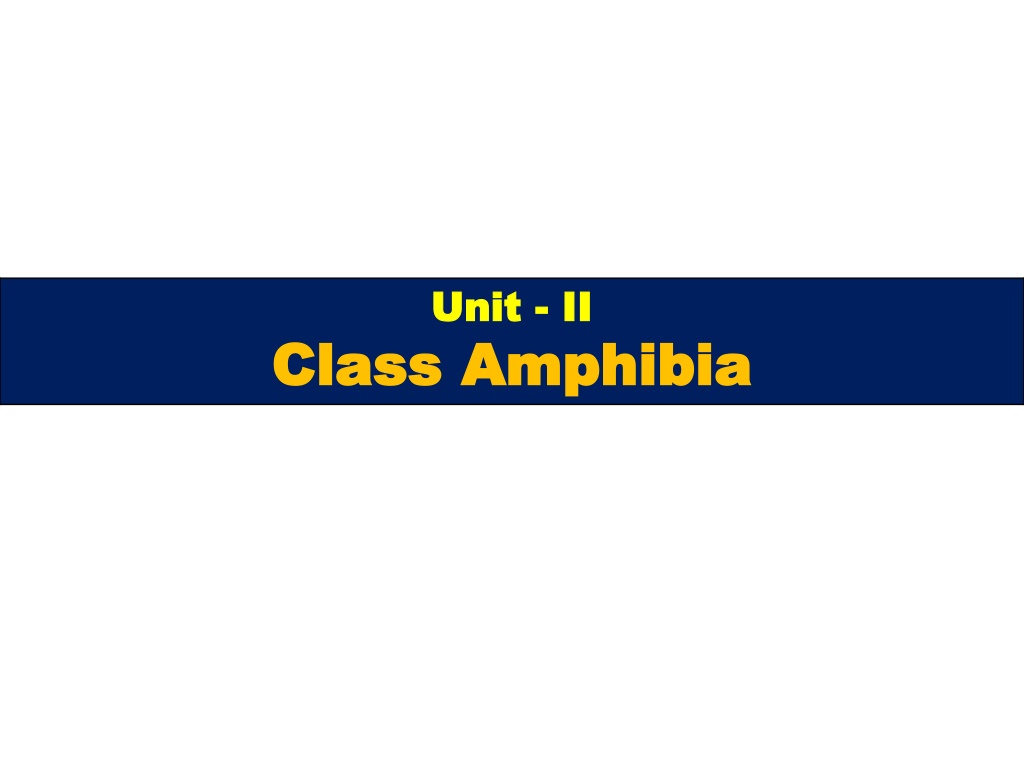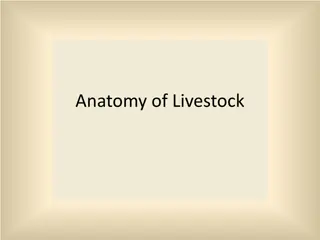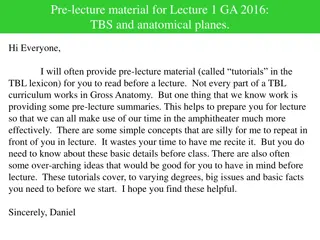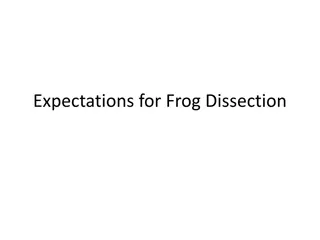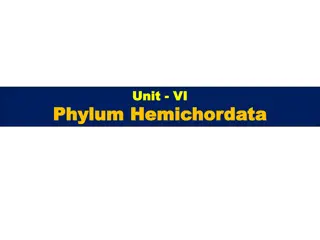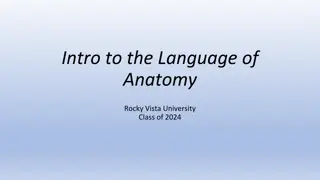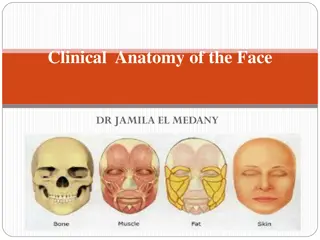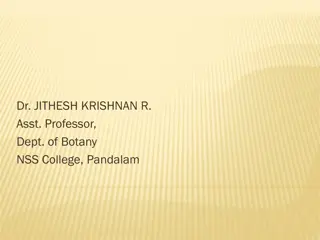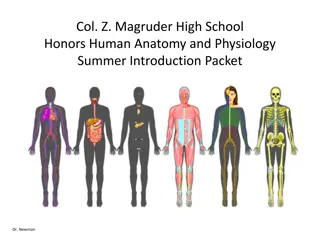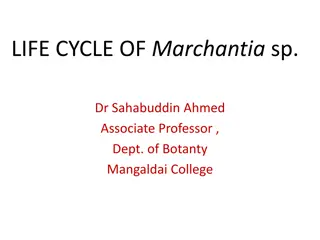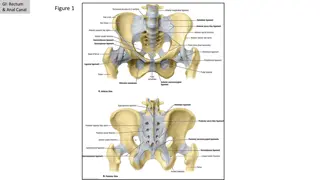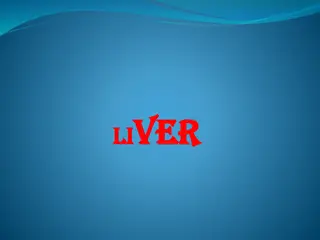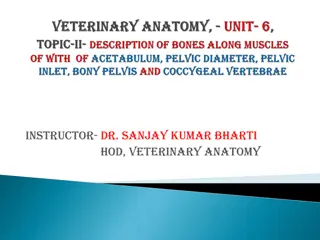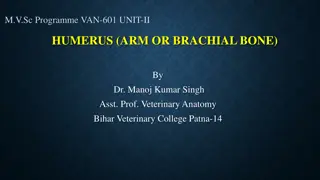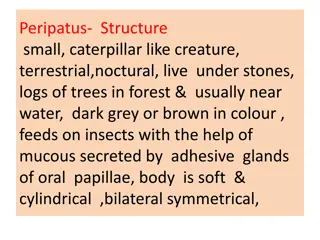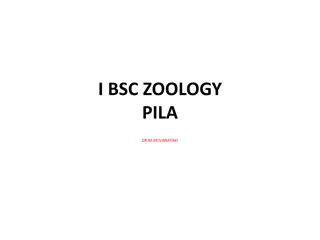Anatomy of a Frog: External Features and Body Structure
Frog's external features include a streamlined body for aquatic life, smooth and moist skin, green coloration, and a unique head structure with prominent eyes and nostrils. The body lacks a neck and tail, with the head and trunk being broadly joined. The eyes are protected by eyelids, and a nictitating membrane aids in vision underwater. The skin is folded and coloration helps to blend with the environment.
Download Presentation

Please find below an Image/Link to download the presentation.
The content on the website is provided AS IS for your information and personal use only. It may not be sold, licensed, or shared on other websites without obtaining consent from the author. Download presentation by click this link. If you encounter any issues during the download, it is possible that the publisher has removed the file from their server.
E N D
Presentation Transcript
Unit Unit - - II II Class Amphibia Class Amphibia
External Feature of Frog External Feature of Frog Shape and Size Besides aerial mode of life, frog also leads aquatic mode of life. Therefore, it has streamlined body which is the characteristic of the aquatic animals and assist in swimming in water. The two ends, the anterior and the posterior, of the body are pointed and the triangular flattened head, with its blunt apex directed forward, is broadly united to the trunk. Thus, there is no neck to connect the head and trunk together and no tail. The size of the frog varies from species to species or even in the same species depending upon the age of the individual. The size may range from few Centimeters to many Centimeters.
Skin The skin is smooth, moist, slippery and lacking in the external protective scales or hairs. It is considerably thicker on the dorsal side of the body than it is below. At the dorsal side of the body it is thrown into a number of folds which extend from behind the eyes. The ridges, thus, formed by the thickening of the skin are known as dorsolateral dermal plicae. Its colour on the back and the limbs is dark green with dark coloured streaks and patches, while on the ventral side it is pale yellow.
Colour The colour of the body at the dorsal side is green with black spots and streaks but ventrally it is paler. This type of coloration harmonises with that of surrounding environment. Skin is smooth, thin, moist and slimy, and fits loosely on the body. Skin of back is folded or thickened longitudinally called dermal plicae. Division of Body The body of the frog is divided into two parts, the head and trunk, the true neck and tail of tadpole being absent. The head and trunk are broadly joined.
Head The head is almost triangular and somewhat flattened. Its anteriority directed blunt apex is known as snout which terminates into a large, transverse mouth. At the tip of the snout are two laterally placed nostrils or external nares communicating with the buccal cavity through internal nares, serving in respiration. The head dorsolateral bears two large prominent bulging eyes. This position enables the frog to see in all the directions and, thus, compensate the disadvantage on land due to the absence of the neck. The eyes are protected by two eyelids, the upper eyelid is thick, fleshy, opaque and almost immovable but the lower one is thin, transparent and movable, capable to cover the eye.
Beneath it there is a transparent third eyelid or nictitating membrane which is merely an outgrowth of the lower eyelid that can cover the eyeball in water and also keep it moist in the air. The frog can see through it. In the middle of the head, just in front of the eyes, there is a light coloured patch-the brow spot which represents the vestigial pineal eye. There are no external ears but behind and below each eye there is a nearly circular obliquely placed a tough transparent membrane-the tympanic membrane or ear drum. In the male frog under the head on either side are placed two bluish wrinkled patches of skin-the vocal sacs which are used to produce croaking sound to attract the females for copulation.
Trunk The head is broadly joined with short somewhat flattened ovoid trunk. At its dorsal side in the middle region in the resting stage there is a characteristic sacral hump which is due to the linking of the hip girdle to the vertebral column. At the posterior end of trunk, in between the hind limbs is present the cloacal opening or vent through which fecal matter, urine and reproductive bodies (sperms and ova) are discharged. Attached to the trunk are two pairs of limbs. The forelimbs are shorter, while the hind limbs are larger.
The forelimbs are meant to hold and support the front part of the body at the time of jumping but the hind limbs assist in jumping and swimming as the webs are present in between the toes. Each forelimb comprises an upper arm, forearm, wrist and hand with four fingers (digits) and a vestigial thumb or pollex. In male the base of the first (inner) finger is thickened especially in the breeding season, forming the nuptial pad for clasping the female at the time of amplexus. Each hind limb comprises an upper thigh, shank or lower leg, ankle (tarsus) and long foot. The latter has a narrow sole and five slender toes connected by broad thin webs of skin which help in swimming.
